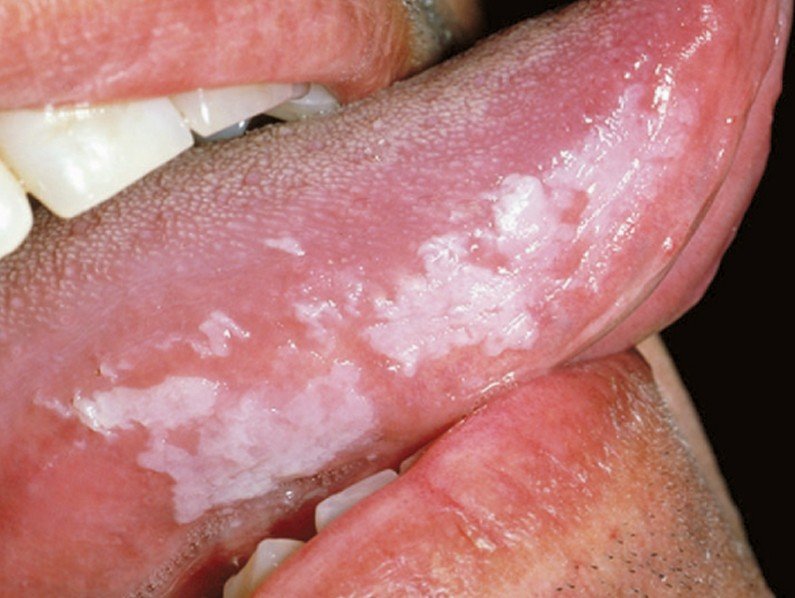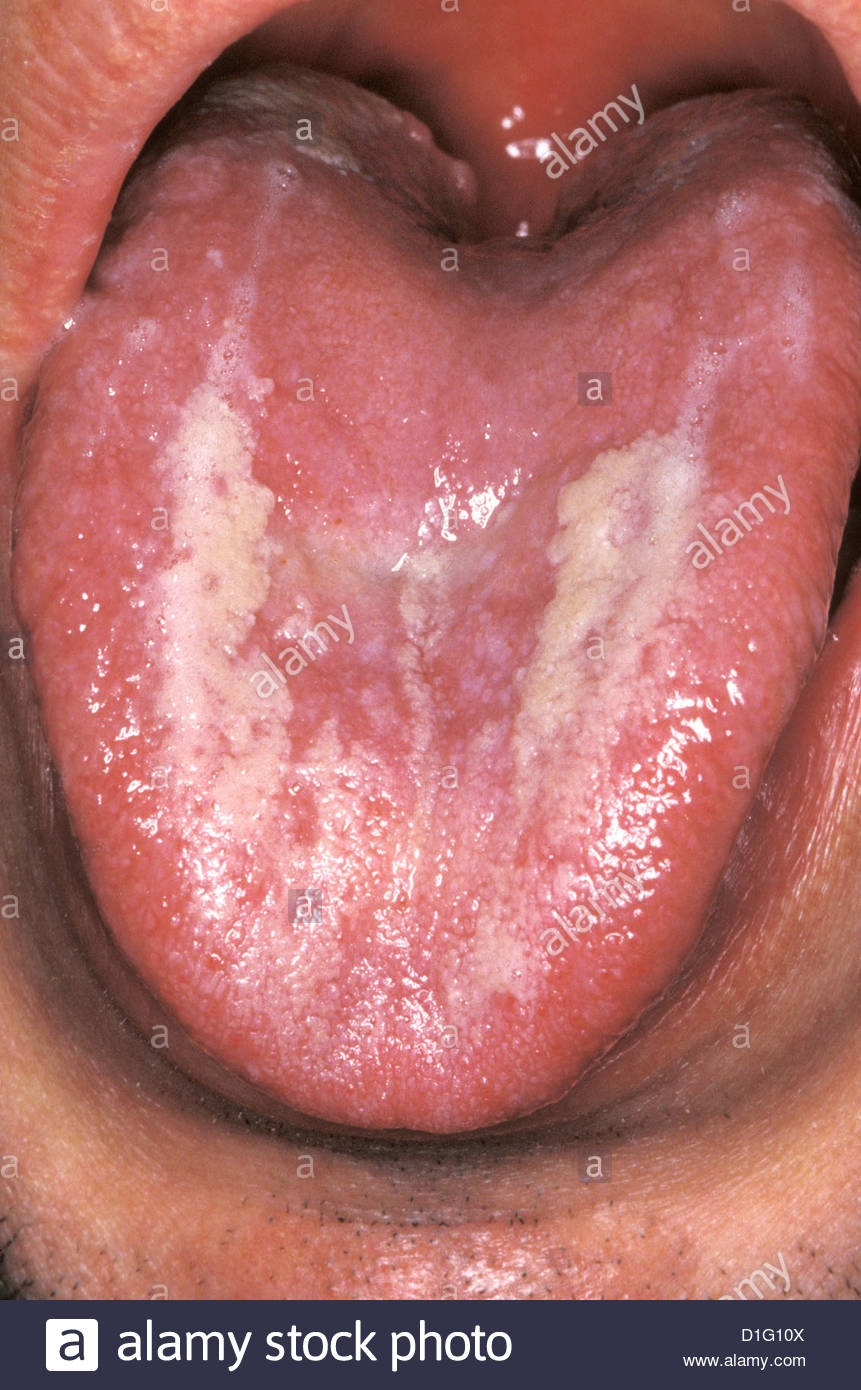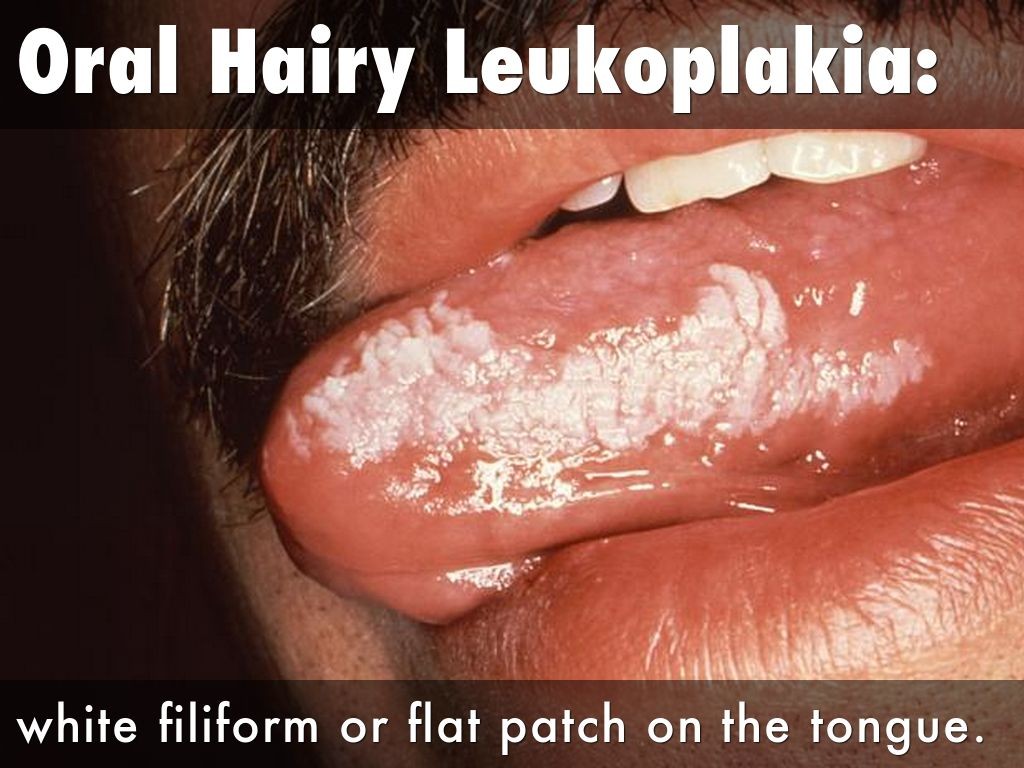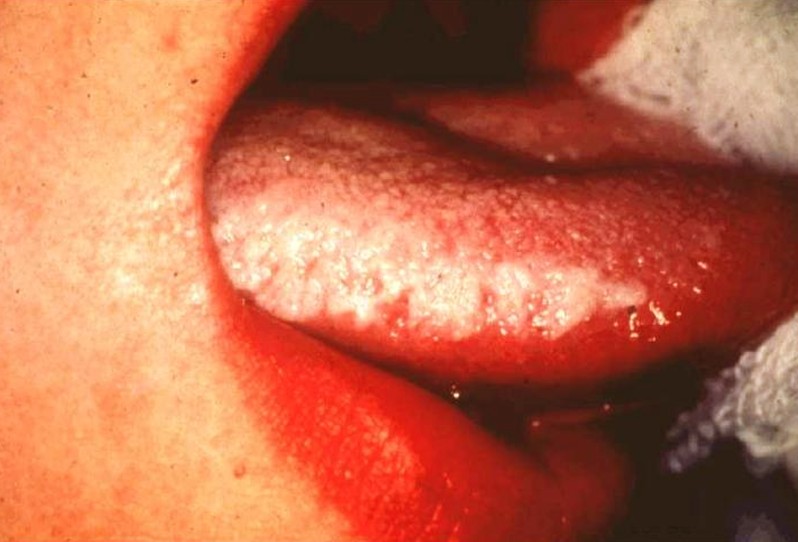http://mddk.com/wp-content/uploads/2015/02/oral-hairy-leukoplakia-pictures-4.jpg Your tongue helps you taste, swallow, and chew. You also use it to speak. Problems with the tongue can have many different causes. Learn more. Picture 1 – Leukoplakia Tongue. Some of the main types of Leukoplakia are: Hairy Leukoplakia (HL) People with weakened immune system due to medications or underlying disorders (such as HIV/AIDS) suffer from a form of Leukoplakia that is known as “Hairy Leukoplakia (HL)”.

http://c8.alamy.com/comp/D1G10X/hairy-leukoplakia-D1G10X.jpg

https://smartypance.com/wp-content/uploads/2015/09/Oral-Hairy-Leukoplakia-1024×768.jpg

Black hairy tongue. This condition will appear as black, gray, or brown patches that look like they’re growing hair. Black hairy tongue can start out as a small spot and grow to coat most of the top of the tongue. It’s a buildup …
Other disturbances of oral epithelium, including tongue. 2016 2017 2018 Billable/Specific Code. K13.29 is a billable/specific ICD-10-CM code that can be used to indicate a diagnosis for reimbursement purposes.; The 2018 edition of ICD-10-CM K13.29 became effective on October 1, 2017.; This is the American ICD-10-CM version of K13.29 – …
http://healthh.com/wp-content/uploads/2014/05/hairy-leukoplakia-pictures.jpg With leukoplakia (loo-koh-PLAY-key-uh), thickened, white patches form on your gums, the insides of your cheeks, the bottom of your mouth and, sometimes, your tongue. http://hellomrdoctor.com/wp-content/uploads/2016/01/hairy-leukoplakia-pics.jpg
Leukoplakia is a condition in which thick, white patches form on your tongue and the lining of your mouth. Smoking is the most common cause. But other irritants can result in this condition as well. Mild leukoplakia is usually harmless and often goes away on its own. More serious cases may be linked
http://mddk.com/wp-content/uploads/2015/02/oral-hairy-leukoplakia.jpg Leukoplakia is a white or gray patch that develops on the tongue, the inside of the cheek, or on the floor of the mouth. It is the mouth’s reaction to chronic irritation of the mucous membranes of the mouth. Leukoplakia patches can also develop on the female genital area; however, the cause of this
Leukoplakia is a white or gray patch that develops on the tongue, the inside of the cheek, or on the floor of the mouth. It is the mouth’s reaction to chronic irritation of the mucous membranes of the mouth. Leukoplakia patches can also develop on the female genital area; however, the cause of this
http://healthool.com/wp-content/uploads/2013/08/hairy-leukoplakia-pictures-3.jpg

Hairy Leukoplakia Of Tongue


http://diseasespictures.com/wp-content/uploads/2012/07/Oral-Hairy-Leukoplakia-2.jpg
With leukoplakia (loo-koh-PLAY-key-uh), thickened, white patches form on your gums, the insides of your cheeks, the bottom of your mouth and, sometimes, your tongue.
Black hairy tongue. This condition will appear as black, gray, or brown patches that look like they’re growing hair. Black hairy tongue can start out as a small spot and grow to coat most of the top of the tongue. It’s a buildup …
Your tongue helps you taste, swallow, and chew. You also use it to speak. Problems with the tongue can have many different causes. Learn more.
http://www.regionalderm.com/Regional_Derm/RD_Large/Oral_hairy_leuk9.jpg

Other disturbances of oral epithelium, including tongue. 2016 2017 2018 Billable/Specific Code. K13.29 is a billable/specific ICD-10-CM code that can be used to indicate a diagnosis for reimbursement purposes.; The 2018 edition of ICD-10-CM K13.29 became effective on October 1, 2017.; This is the American ICD-10-CM version of K13.29 – … Inflammatory Diseases: Back to Top Hairy Tongue: This is a relatively rare condition whose appearance is due to the elongation of filiform papillae.These papillae have a mechanical abrasive function. These papillae do not contain taste buds This condition can be caused by poor oral hygiene, chronic oral irritation or smoking.
Picture 1 – Leukoplakia Tongue. Some of the main types of Leukoplakia are: Hairy Leukoplakia (HL) People with weakened immune system due to medications or underlying disorders (such as HIV/AIDS) suffer from a form of Leukoplakia that is known as “Hairy Leukoplakia (HL)”.
Symptoms. The main feature of leukoplakia is a white patch in the mouth that can’t be removed by rubbing. A white patch most commonly occurs on the tongue …
http://healthh.com/wp-content/uploads/2014/05/hairy-leukoplakia-pictures-2.jpg
Black hairy tongue is a temporary, harmless oral condition that gives your tongue a dark, furry appearance.
Symptoms. The main feature of leukoplakia is a white patch in the mouth that can’t be removed by rubbing. A white patch most commonly occurs on the tongue …
Inflammatory Diseases: Back to Top Hairy Tongue: This is a relatively rare condition whose appearance is due to the elongation of filiform papillae.These papillae have a mechanical abrasive function. These papillae do not contain taste buds This condition can be caused by poor oral hygiene, chronic oral irritation or smoking.

Black hairy tongue is a temporary, harmless oral condition that gives your tongue a dark, furry appearance.

Leukoplakia is a condition in which thick, white patches form on your tongue and the lining of your mouth. Smoking is the most common cause. But other irritants can result in this condition as well. Mild leukoplakia is usually harmless and often goes away on its own. More serious cases may be linked
